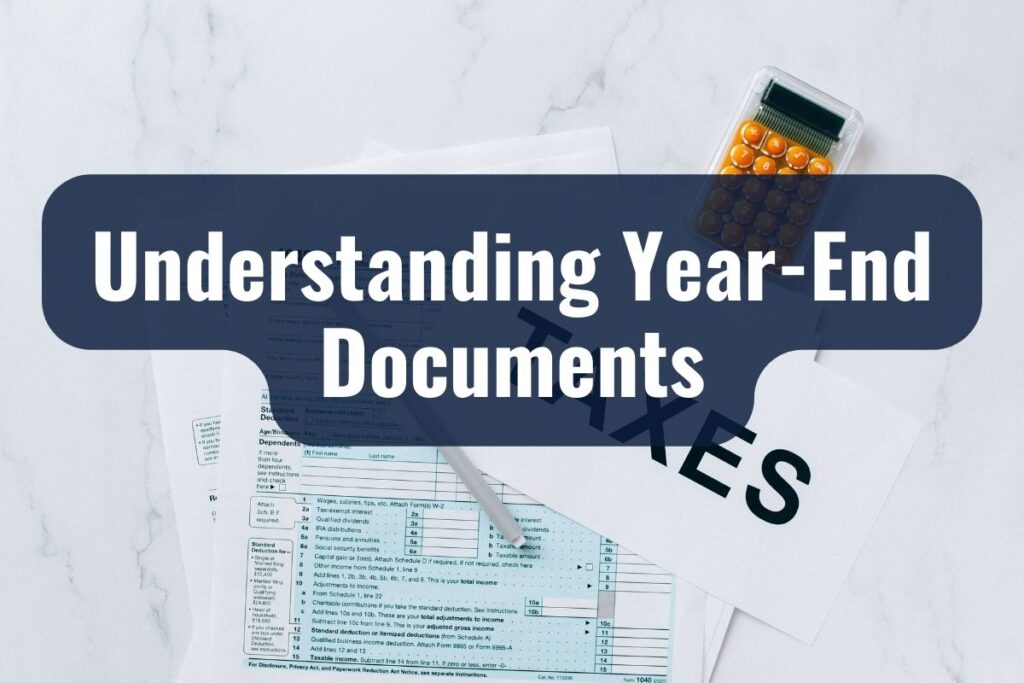Understanding the intricacies of a German payslip can be a daunting task, especially for those who are new to the country’s workforce or unfamiliar with the German language. A payslip, or ‘Gehaltsabrechnung’ as it’s known in Germany, is more than just a document showing your earnings; it’s a detailed record that reflects various aspects of employment and taxation laws in Germany.
In Germany, payslips are typically issued monthly, and they include a range of information from gross salary to various deductions like taxes and social security contributions. The document might seem overwhelming at first glance due to its detailed nature and the use of specific financial terminology. However, with a proper understanding, one can easily navigate through the nuances of these payslips.
This article aims to get German payslip explained, breaking down its components in a detailed yet digestible manner. Whether you’re an employee trying to understand where your hard-earned money is going, an HR professional tasked with payroll duties, or an expat grappling with the nuances of a new financial system, this guide is designed to walk you through each aspect of a German payslip.
KEY TAKEAWAYS
- German payslips are detailed documents outlining earnings and deductions.
- Tax categories significantly influence net salary and tax deductions.
- Social security contributions are vital for Germany’s social support system.
- Factors like overtime and bonuses can affect gross salary.
- Familiarity with payslip terminology aids in understanding.
- Regular payslip reviews help identify and correct discrepancies.
- Various resources are available for payroll queries.
Understanding the Basics of a German Payslip
What is a German Payslip?
A German payslip, known locally as a ‘Gehaltsabrechnung’, is a comprehensive document provided by employers to employees, typically on a monthly basis. It details an employee’s earnings and deductions for the pay period. In essence, this document serves as a clear record of the financial agreement between an employer and an employee, reflecting the salary agreed upon, alongside various deductions as per German law.
Purpose and Frequency
The primary purpose of the payslip is twofold: it acts as a proof of income and a detailed record of all deductions made from the gross salary. This document is crucial for employees for multiple reasons. It is used for tax purposes, serves as proof of income for loan applications or rental agreements, and helps employees understand and verify the accuracy of their salary and deductions.
Payslips in Germany are issued regularly, with most employees receiving them monthly. This regular issuance allows employees to keep a consistent check on their earnings and deductions, ensuring transparency and clarity in their financial dealings with their employer.
Key Information Included
A typical German payslip includes a range of information, some of which might be familiar, and others unique to the German system. At its core, the payslip will detail:
- Employee Information: This includes the employee’s name, employee number, and often their tax identification number. This section ensures that the payslip corresponds to the correct individual.
- Employer Information: Details of the employer, including the company’s name and address, are also present. This is especially important for official and administrative purposes.
- Pay Period: The specific time frame for which the payslip is issued, usually one calendar month, is clearly stated.
- Gross Salary: This is the total salary before any deductions. It encompasses basic pay, and possibly other components like bonuses, overtime pay, and allowances, depending on the employee’s contract and company policy.
- Deductions: A crucial part of the payslip, this section lists all deductions made from the gross salary. These typically include taxes, social security contributions, and other statutory or voluntary deductions.
- Net Salary: Finally, the payslip shows the net salary – the amount that the employee actually receives after all deductions are made. This is the amount that gets deposited into the employee’s bank account.
Key Components of a German Payslip Explained

A German payslip, while detailed and complex, is composed of several key components that are crucial for understanding an employee’s remuneration and deductions. Let’s break down these components to provide a clearer understanding of what each section represents.
Personal Information
At the very top of the payslip, you’ll find the personal information section. This includes:
Employee’s Name: The full name of the employee.
Employee ID: A unique identification number assigned by the employer.
Tax Class (Steuerklasse): Indicating the tax category the employee falls under, which is determined by marital status, number of children, etc. This class plays a significant role in calculating the amount of income tax to be deducted.
Gross Salary
The gross salary is the total earnings before any deductions. This section is often itemized to include:
Basic Salary: The fundamental component of the pay, often based on the employee’s contract.
Bonuses and Allowances: Additional earnings such as performance bonuses, holiday pay, or allowances like a transport allowance.
Overtime Pay: Compensation for any extra hours worked beyond the standard working hours.
Deductions
Deductions reduce the gross salary to arrive at the net salary. These include:
Income Tax: Based on the employee’s tax class, this is a significant deduction and varies according to income level.
Solidarity Surcharge: A small percentage of the income tax, intended for the development of Eastern Germany.
Church Tax: Applicable if the employee is a member of certain churches, calculated as a percentage of the income tax.
Social Security Contributions: These are split into four major categories:
- Health Insurance (Krankenversicherung)
- Pension Insurance (Rentenversicherung)
- Unemployment Insurance (Arbeitslosenversicherung)
- Nursing Care Insurance (Pflegeversicherung)
Each of these contributions is shared between the employer and employee, and they play a vital role in the German social security system.
Net Salary
Finally, the most anticipated part of the payslip is the net salary, which is the amount the employee takes home after all deductions. This is the actual amount credited to the employee’s bank account.
Tax Categories and Their Impact
One of the most significant aspects of a German payslip is the tax category, or “Steuerklasse.” These categories have a direct impact on the amount of income tax deducted from an employee’s salary. Understanding these categories is crucial for employees to comprehend how their net salary is calculated.
Overview of Tax Categories
In Germany, there are six tax categories, each designed to reflect different personal circumstances. These categories determine the rate at which income tax is charged:
- Steuerklasse I: For single or divorced employees without children.
- Steuerklasse II: For single or divorced employees with children, granting them a child allowance.
- Steuerklasse III: Generally for married employees where one spouse earns significantly more than the other or if one is unemployed. This class is beneficial for higher earners.
- Steuerklasse IV: For married employees where both partners earn a similar amount.
- Steuerklasse V: This is an option for one of the spouses in a marriage, usually chosen if the other spouse is in Steuerklasse III.
- Steuerklasse VI: For secondary employment or a second job.
Each class has different tax rates and allowances, directly affecting the amount of tax deducted from the gross salary.
Impact of Tax Categories on Net Salary
Higher Tax Rate for Higher Earning Categories: For example, employees in Steuerklasse III typically have a lower tax rate compared to those in Steuerklasse I.
Child Allowances in Steuerklasse II: This can significantly reduce the tax burden for single parents.
Dual-Income Couples in Steuerklasse IV: Both partners are taxed equally, preventing any unfair tax advantages or disadvantages.
Secondary Employment in Steuerklasse VI: This usually incurs the highest tax rate, as it applies to additional income beyond the primary employment.
The choice of tax category is essential, particularly for married couples or single parents, as it can lead to significant differences in net income. It’s important for employees to evaluate their personal circumstances and choose the appropriate tax class to optimize their tax deductions.
Social Security Contributions

Social security contributions in Germany are a vital component of the payslip, representing the shared responsibility between the employer and the employee in supporting the country’s robust social security system. These contributions are automatically deducted from the gross salary and are divided into four main categories.
| Contribution Type | Purpose | Employer Contribution | Employee Contribution |
| Health Insurance (Krankenversicherung) | Access to healthcare services | 50% | 50% |
| Pension Insurance (Rentenversicherung) | Retirement benefits | 50% | 50% |
| Unemployment Insurance (Arbeitslosenversicherung) | Financial support during unemployment | 50% | 50% |
| Nursing Care Insurance (Pflegeversicherung) | Long-term nursing care costs | 50% | 50% |
Health Insurance (Krankenversicherung)
Purpose: This contribution ensures access to healthcare services.
Contribution Rate: It’s generally split equally between the employer and the employee.
Coverage: It includes a wide range of medical and dental care services.
Pension Insurance (Rentenversicherung)
Purpose: This is for retirement benefits, ensuring financial support in old age.
Contribution Rate: Like health insurance, the cost is equally divided between the employer and the employee.
Benefit: It provides a pension once the individual reaches the retirement age and meets other qualifying conditions.
Unemployment Insurance (Arbeitslosenversicherung)
Purpose: This provides financial support in the event of unemployment.
Contribution Rate: Also shared equally between the employer and employee.
Eligibility: To receive benefits, employees must have contributed for a minimum period and be actively seeking employment.
Nursing Care Insurance (Pflegeversicherung)
Purpose: This is designed to cover the costs of long-term nursing care, whether in-home or in a facility.
Contribution Rate: Split equally, with an additional contribution for childless employees over a certain age.
Coverage: It helps to cover the costs associated with long-term care due to age or disability.
Impact of Social Security Contributions
These contributions, while reducing the net take-home salary, provide a comprehensive safety net for employees. They ensure access to healthcare, financial support during unemployment or in retirement, and assistance with long-term care needs. The exact contribution rates vary annually based on government regulations and can differ slightly based on factors such as the health insurance provider.
Special Payroll Situations
In addition to the standard components of a German payslip, there are various special payroll situations that can affect the calculation of an employee’s salary. Understanding these scenarios is essential for a comprehensive grasp of how different factors can influence the final pay.
Overtime Pay
Calculation: Overtime pay is calculated when an employee works beyond their contracted hours. The rate of pay for overtime hours is often higher than the standard rate and is detailed in the employment contract or company policy.
Impact on Payslip: This additional pay will be reflected in the gross salary and is subject to standard deductions.
Sick Pay
Entitlement: In Germany, employees are entitled to continued payment (Krankengeld) in the event of illness.
Duration: This payment is typically for a maximum of six weeks, after which other benefits may apply.
Payslip Reflection: During this period, the payslip will indicate the sick pay received, which might be different from the regular salary.
Vacation Pay
Allocation: Employees in Germany are entitled to paid vacation days.
Payslip Inclusion: Vacation pay is usually reflected in the gross salary and is calculated based on the average daily earnings.
Additional Benefits or Deductions
Company Benefits: These may include items like company car usage, meal vouchers, or travel allowances.
Deductions: Additional deductions can occur for various reasons, such as advance salary payments or corrections from previous pay periods.
Tax Implications: Some benefits may be taxable, while others are provided tax-free up to certain limits.
Year-End Bonuses
Occurrence: Many companies in Germany offer year-end bonuses or ‘Weihnachtsgeld.’
Calculation and Taxation: These bonuses are subject to income tax and social security contributions, just like regular salary.
Adjustments for Leave of Absence
Maternity or Parental Leave: Adjustments are made for employees on maternity or parental leave, with specific calculations based on the duration and type of leave.
Sabbaticals: For longer sabbaticals, the payslip will reflect any agreed-upon salary adjustments.
Understanding Year-End Documents

In addition to the monthly payslips, employees in Germany receive crucial year-end documents that summarize their annual earnings and deductions. These documents play a significant role in personal financial management, particularly in tax filing.
Annual Tax Statement (Lohnsteuerbescheinigung)
Purpose: This document provides a comprehensive summary of the total income earned and taxes paid over the year.
Components: It includes details on gross salary, total tax deductions (including income tax, solidarity surcharge, and church tax), and social security contributions.
Use: The Lohnsteuerbescheinigung is essential for filing an annual tax return. It serves as an official record for the tax office (Finanzamt) to assess an employee’s tax liability or refund.
Importance for Tax Return Filing
Tax Filing: Employees use the information from the annual tax statement to file their tax returns, either independently or with the help of a tax advisor.
Potential Tax Refunds: By filing a tax return, employees may be eligible for tax refunds, especially if they have incurred work-related expenses or have special circumstances like child allowances.
Other Year-End Documents
Bonus Statements: For those who receive bonuses or additional compensation at the year’s end, separate statements detailing these payments may be provided.
Additional Earnings or Adjustments: Any adjustments or additional earnings not reflected in regular monthly payslips will also be summarized in year-end documents.
Understanding and Review: It’s crucial for employees to review these documents carefully to ensure all earnings and deductions are accurately recorded.
Seeking Clarifications: If there are discrepancies or uncertainties, employees should contact their HR or payroll department for clarification.
These year-end documents provide a holistic view of an employee’s financial earnings and deductions for the entire year. They are not only important for legal and tax purposes but also offer an opportunity for employees to review their annual financial status and plan accordingly for the next year.
Common Terms and Abbreviations
German payslips can be filled with various terms and abbreviations that might be unfamiliar, especially to expatriates or those new to the German payroll system. Understanding these terms is key to comprehending the details of your payslip. Here, we will decode some of the most common terms and abbreviations you are likely to encounter.
Gross Salary Components
- Bruttogehalt (Gross Salary): The total salary before any deductions.
- Grundgehalt (Basic Salary): The base salary excluding any additional payments.
- Zulagen (Allowances): Additional payments like language or hardship allowances.
- Überstunden (Overtime): Compensation for hours worked beyond the regular working hours.
Deductions
- Lohnsteuer (Income Tax): The tax deducted from your salary based on your tax class.
- Kirchensteuer (Church Tax): Applicable to members of certain churches and calculated as a percentage of the income tax.
- Solidaritätszuschlag (Solidarity Surcharge): An additional charge based on your income tax, meant for the development of Eastern Germany.
Social Security Contributions
- RV (Rentenversicherung, Pension Insurance): Contribution towards the state pension scheme.
- AV (Arbeitslosenversicherung, Unemployment Insurance): Insurance against unemployment.
- KV (Krankenversicherung, Health Insurance): Contribution to the statutory health insurance system.
- PV (Pflegeversicherung, Nursing Care Insurance): Insurance for long-term nursing care needs.
Net Salary
- Nettogehalt (Net Salary): The amount you receive after all deductions have been made.
Other Common Terms
- Steuerklasse (Tax Class): The tax category determining the rate of income tax.
- Arbeitslohn (Payable Salary): The salary due for the work performed during the pay period.
- Jahreslohnsteuertabelle (Annual Tax Table): A table used to determine the amount of income tax based on annual earnings.

Despite the precision typically associated with payroll processing, errors or discrepancies can occasionally appear on a German payslip. It’s important for employees to be proactive in identifying and resolving these issues to ensure their financial records are accurate and to protect their rights.
Identifying Errors
- Regular Review: Make it a habit to review your payslip monthly. Check for any unexpected changes in gross salary, deductions, or net pay.
- Understanding Payslip Components: Familiarize yourself with the different components of your payslip. This knowledge makes it easier to spot when something doesn’t add up.
Common Types of Errors
- Incorrect Personal Details: Mistakes in your name, employee ID, or tax class.
- Miscalculated Overtime or Bonuses: Errors in recording the hours worked or incorrect calculation of additional earnings.
- Incorrect Deductions: Over or under deduction of taxes, social security contributions, or other deductions.
Steps to Resolve Discrepancies
- Gather Evidence: Before reaching out for clarification, ensure you have all necessary documents at hand, such as previous payslips, employment contracts, or records of hours worked.
- Contact HR or Payroll Department: They are your first point of contact for any discrepancies. Provide them with a clear explanation of the issue along with any supporting documentation.
- Follow-Up: If the issue is not resolved promptly or satisfactorily, follow up regularly. Keep a record of all communications for future reference.
- Consult a Professional: If discrepancies continue or you are not satisfied with the responses, consider consulting a professional, like a tax advisor or a labor lawyer, especially for complex issues.
Preventative Measures
- Stay Informed: Keep abreast of any changes in tax laws, social security contributions, or your company’s payroll policies that might affect your salary.
- Clear Communication: Ensure any changes in your personal situation that might affect your payroll (like a change in tax class or marital status) are promptly communicated to your HR department.
Related: New to Germany: A Newcomer’s Guide to Living in Germany
Additional Resources
- Human Resources Department: Your first point of contact should be your company’s HR department. They can provide specific details and explanations related to your payslip and company payroll policies.
- Payroll Department: For more technical questions about payroll calculations, the payroll department can offer insights and clarifications.
- Tax Advisors (Steuerberater): For complex tax queries or for assistance in filing tax returns, a professional tax advisor can be invaluable. They can also help resolve issues related to incorrect tax deductions.
- Financial Planners: They can assist in understanding how your salary and deductions impact your overall financial planning, especially for long-term goals.
- Government Websites: Official government sites provide information on tax laws, social security contributions, and employment rights in Germany.
- Expat Forums: Online communities and forums for expatriates in Germany can be a rich source of information and advice from individuals who may have faced similar issues.
- Labour Lawyers: In cases of serious discrepancies or disputes with your employer regarding payroll, consulting a labor lawyer can be a necessary step.
- Workers’ Unions: If you are a member of a union, they can offer guidance and support in resolving payroll-related issues.
Translation Services: For those who are not proficient in German, translation services can help in understanding the technical language used in payslips and official documents.
Seminars and Workshops: Attend seminars or workshops focused on German tax laws and payroll systems. These are often conducted by financial experts and are geared towards helping employees understand the intricacies of their payslips.


